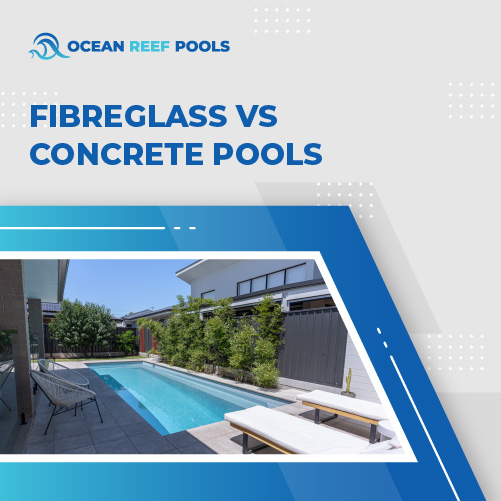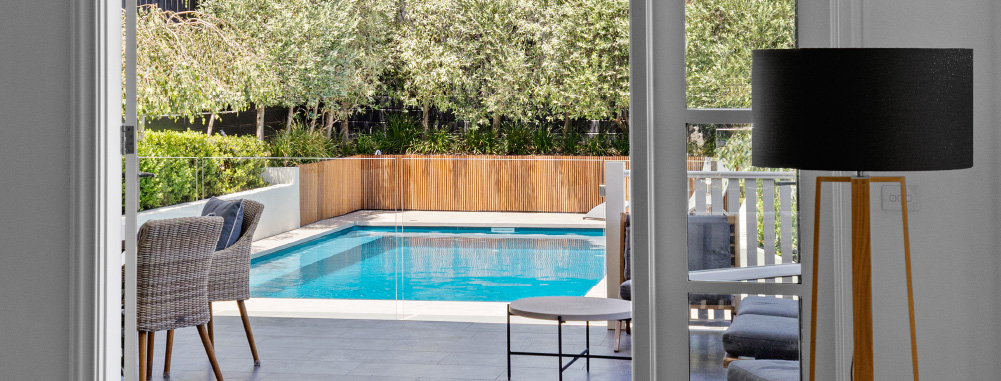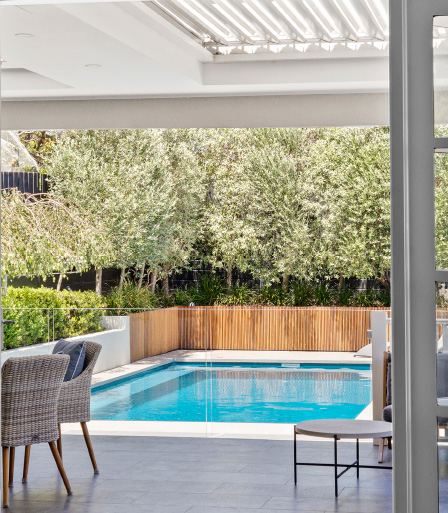Fibreglass vs Concrete Pools: Choosing the Right Option for Your Backyard
When it comes to installing a pool in your backyard, one of the most significant decisions you’ll face is whether to go for a fibreglass or concrete pool. Both options offer distinct advantages and drawbacks, and your choice will depend on various factors such as budget, maintenance preferences, and how you envision your outdoor space. In this article, we’ll explore the key differences between fibreglass and concrete pools, helping you make an informed decision on the best option for your home.


1. The Basics: What Are Fibreglass and Concrete Pools?
Before diving into the differences, it’s essential to understand the basic construction of both types of pools:
- Fibreglass Pools: These pools are pre-manufactured in a factory, then delivered and installed in your backyard as a single piece. They are made from a combination of fibreglass, resin, and gel coat, creating a smooth, non-porous surface. Fibreglass pools are available in various shapes and sizes, but they do have limitations when it comes to customisation.
- Concrete Pools: Also known as gunite or shotcrete pools, concrete pools are built on-site using a steel frame, rebar, and sprayed concrete. After the concrete is set, the surface is finished with a range of materials, including plaster, tiles, or pebblecrete. Concrete pools can be fully customised in terms of shape, size, and design, offering more flexibility compared to fibreglass.
2. Installation Process: Speed and Complexity
The installation timeline for fibreglass and concrete pools varies significantly.
- Fibreglass Pools: One of the major advantages of fibreglass pools is their relatively fast installation. Because they are pre-made, installation usually takes just a few weeks. The process involves excavation, delivery of the pool shell, and placement into the hole. Once the shell is in place, plumbing and electrical work can be completed, followed by finishing touches like tiling. In total, a fibreglass pool can typically be installed in 2 to 6 weeks.
- Concrete Pools: Installing a concrete pool takes longer due to the complexity of the process. Since concrete pools are built from scratch on-site, it can take anywhere from 3 to 6 months (or more) for the pool to be fully installed. The construction process involves excavation, forming the structure with steel reinforcements, spraying the concrete, and then applying the finishing surface. Each of these steps requires more time and attention to detail, contributing to the longer installation period.
3. Cost Considerations: Which Is More Affordable?
Cost is one of the most significant factors to consider when choosing between a fibreglass and concrete pool. Both options come with their price tags, but they vary in terms of both initial and long-term costs.
- Fibreglass Pools: While the upfront cost of a fibreglass pool can be higher than a basic concrete pool, it is often considered more cost-effective in the long run. Fibreglass pools are relatively easy to install, which helps reduce the overall labour costs. Furthermore, they are pre-made and require fewer customisation options, which can lower the final price. On average, fibreglass pools in Australia can cost between $30,000 and over $60,000, depending on the size and location.
- Concrete Pools: Concrete pools are typically more expensive to build, mainly due to the labour-intensive installation process and the flexibility of customisation. The cost of a concrete pool varies based on size, design, and finishes, but the total price can range from $40,000 to over $100,000 or more. Customised shapes, luxury finishes, and additional features such as spas or waterfalls will all increase the price. Concrete pools may have higher long-term maintenance costs as well.


4. Maintenance: Long-Term Care and Durability
Both fibreglass and concrete pools require maintenance, but their upkeep differs in several key ways.
- Fibreglass Pools: Fibreglass pools have a smooth, non-porous surface, which makes them more resistant to algae growth and easier to clean. The smooth surface also reduces the likelihood of debris sticking to the pool, making regular maintenance tasks, such as vacuuming and scrubbing, less time-consuming. Additionally, fibreglass pools are less likely to develop cracks, which can help lower repair costs in the long run. However, fibreglass pools are not immune to damage, and severe impacts, such as from sharp objects, can cause cracking or damage to the surface.
- Concrete Pools: Concrete pools, while highly durable, are more porous than fibreglass, which means they can accumulate algae and debris more quickly. As a result, cleaning and maintenance can take more effort. The rougher surface of a concrete pool also makes it easier for stains and algae to develop. Regular cleaning, scrubbing, and chemical balancing are crucial to keep a concrete pool in good condition. Concrete pools are also prone to cracking over time due to settling or pressure, and repairing cracks can be costly and labour-intensive.
5. Durability and Lifespan
- Fibreglass Pools: Fibreglass pools are highly durable and typically last 20 to 30 years, or even longer with proper care. They are resistant to corrosion and have fewer maintenance issues over time. However, as mentioned earlier, fibreglass pools can suffer from surface damage if exposed to sharp objects or extreme weather conditions.
- Concrete Pools: Concrete pools are renowned for their long-lasting durability, with a lifespan of 30 to 50 years or more. They are more resistant to impact damage than fibreglass pools and can withstand extreme weather conditions. However, because concrete is more prone to cracking and wear over time, regular repairs and resurfacing may be needed, especially in older pools.
6. Aesthetic Flexibility: Customisation Options
One of the primary advantages of concrete pools is the ability to fully customise the design. Whether you want a unique shape, different finishes, or special features, concrete pools provide endless possibilities for creating a one-of-a-kind backyard oasis. If you have a specific vision in mind, a concrete pool offers the most flexibility in terms of customisation.
On the other hand, fibreglass pools are pre-fabricated, meaning there are fewer design options. While you can choose from a range of shapes, sizes, and colours, they may not offer the same level of flexibility as concrete pools. However, advances in fibreglass pool technology mean there are still plenty of design options available to suit most preferences.


7. Energy Efficiency and Heating
Both fibreglass and concrete pools can be energy-efficient, but fibreglass pools tend to have the edge in this regard. The smooth, non-porous surface of a fibreglass pool helps to retain heat more effectively, meaning the water stays warmer for longer. As a result, fibreglass pools are easier and less expensive to heat, which can save you money on energy costs over time.
Concrete pools, with their porous surface, tend to lose heat more quickly. While you can install insulation to mitigate heat loss, it may still require more effort and energy to maintain the desired water temperature.
8. Which Pool Is Right for You?
Choosing between a fibreglass and concrete pool ultimately comes down to your priorities and preferences. If you’re looking for a pool that is quick to install, relatively low-maintenance, and energy-efficient, a fibreglass pool may be the best choice for you. On the other hand, if customisation, design flexibility, and long-term durability are more important to you, then a concrete pool might be the ideal option.
Both fibreglass and concrete pools offer excellent value, and with proper care, either option can provide you with years of enjoyment and relaxation. Carefully considering your budget, aesthetic preferences, and maintenance capabilities will help ensure that you make the right decision for your backyard paradise.
Transform Your Backyard with Ocean Reef Pools!
Ready to take the plunge? Get your FREE quote today and start creating your dream pool!